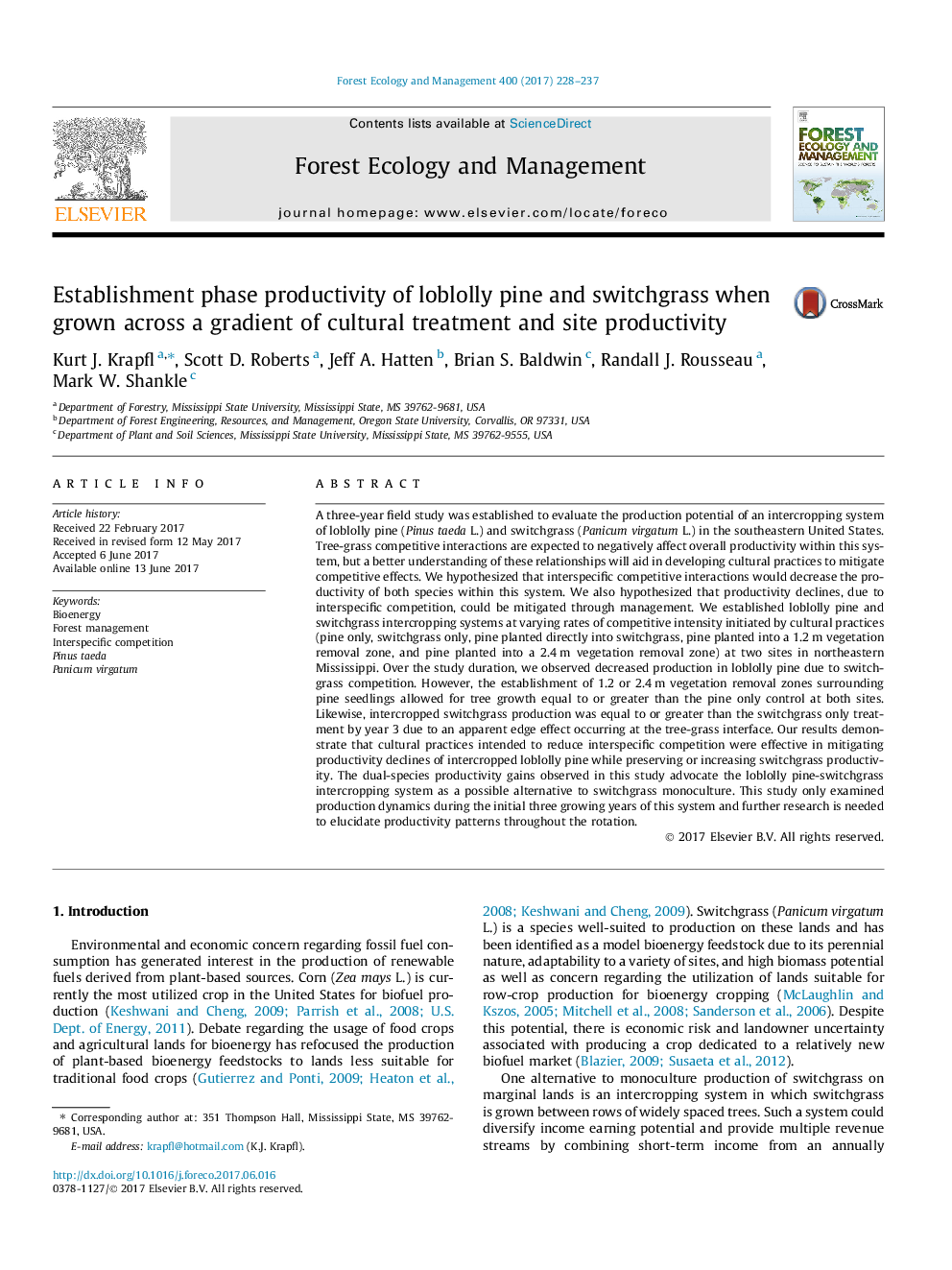| کد مقاله | کد نشریه | سال انتشار | مقاله انگلیسی | نسخه تمام متن |
|---|---|---|---|---|
| 6459234 | 1421358 | 2017 | 10 صفحه PDF | دانلود رایگان |
- Loblolly pine and switchgrass were established and intercropped over three years.
- Vegetation removal zones implemented a gradient of interspecific competition.
- Loblolly pine productivity decreased in response to switchgrass competition.
- Switchgrass was the dominant competitor in early phases of this system.
- Intercropped production was greater than monoculture with cultural treatment.
A three-year field study was established to evaluate the production potential of an intercropping system of loblolly pine (Pinus taeda L.) and switchgrass (Panicum virgatum L.) in the southeastern United States. Tree-grass competitive interactions are expected to negatively affect overall productivity within this system, but a better understanding of these relationships will aid in developing cultural practices to mitigate competitive effects. We hypothesized that interspecific competitive interactions would decrease the productivity of both species within this system. We also hypothesized that productivity declines, due to interspecific competition, could be mitigated through management. We established loblolly pine and switchgrass intercropping systems at varying rates of competitive intensity initiated by cultural practices (pine only, switchgrass only, pine planted directly into switchgrass, pine planted into a 1.2Â m vegetation removal zone, and pine planted into a 2.4Â m vegetation removal zone) at two sites in northeastern Mississippi. Over the study duration, we observed decreased production in loblolly pine due to switchgrass competition. However, the establishment of 1.2 or 2.4Â m vegetation removal zones surrounding pine seedlings allowed for tree growth equal to or greater than the pine only control at both sites. Likewise, intercropped switchgrass production was equal to or greater than the switchgrass only treatment by year 3 due to an apparent edge effect occurring at the tree-grass interface. Our results demonstrate that cultural practices intended to reduce interspecific competition were effective in mitigating productivity declines of intercropped loblolly pine while preserving or increasing switchgrass productivity. The dual-species productivity gains observed in this study advocate the loblolly pine-switchgrass intercropping system as a possible alternative to switchgrass monoculture. This study only examined production dynamics during the initial three growing years of this system and further research is needed to elucidate productivity patterns throughout the rotation.
Journal: Forest Ecology and Management - Volume 400, 15 September 2017, Pages 228-237
